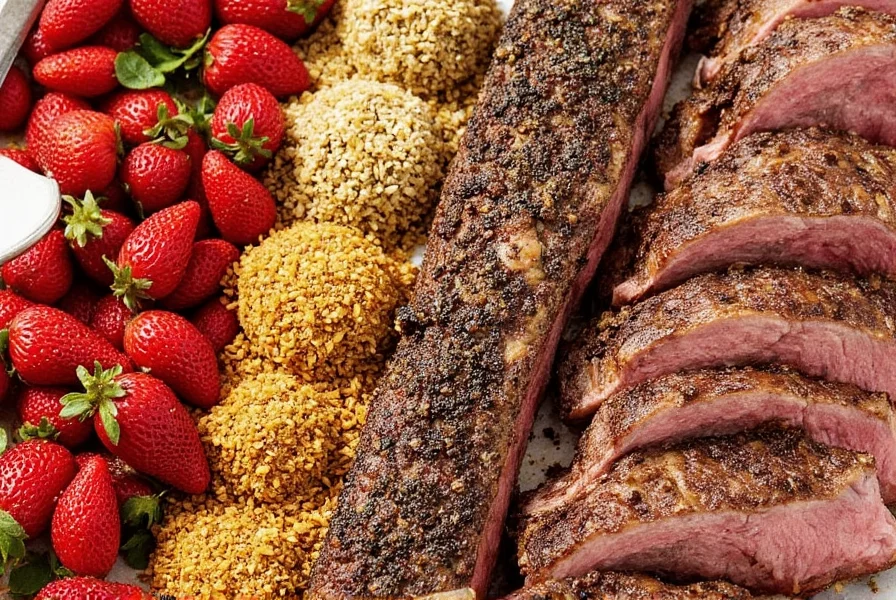Discover the best spices for beef ribs by cut to maximize flavor and tenderness. Whether you're smoking, grilling, or braising, matching the right spices to your rib type is crucial for restaurant-quality results. The evolution of spice pairings reflects culinary science advancements: mid-20th century recipes relied on basic salt/pepper, 1980s regional BBQ styles introduced sugar-based rubs, and modern techniques now leverage volatile compound retention studies for optimal flavor layering (Source: Serious Eats, 2020).
Best Spices for Each Beef Rib Cut
Not all beef ribs are the same, and your spice strategy should reflect that. Here's exactly what works best for each cut:
| Rib Type | Best Spices | Why It Works |
|---|---|---|
| Short Ribs | Smoked paprika, brown sugar, garlic powder, cumin, black pepper | High fat content balances bold flavors; smokiness enhances richness |
| Back Ribs (Dinosaur Ribs) | Sea salt, black pepper, onion powder, mustard powder, brown sugar | Classic BBQ profile complements meaty texture; sweetness balances savory notes |
| Plate Ribs | Soy sauce, ginger, star anise, rice vinegar, garlic | Wet marinade tenderizes leaner meat; Asian-inspired flavors cut through fat |
Pro Tip: Always apply dry rubs at least 1 hour before cooking (or overnight for maximum flavor penetration), and use wet marinades for 4-12 hours for plate ribs.
Storage Tips for Maximum Freshness
Spice potency degradation follows predictable patterns based on form. Research from the University of Illinois Extension demonstrates significant volatility differences:
| Spice Form | Flavor Retention at 6 Months | Critical Threshold |
|---|---|---|
| Ground spices | 50% | Replace when color fades or aroma weakens |
| Whole spices | 80% | Grind immediately before use for maximum potency |
Store them properly to maintain flavor intensity:
- Use glass jars with airtight seals to protect from humidity
- Keep away from heat sources like stovetops or ovens
- Label containers with purchase dates and refresh every 6-12 months
Context Boundaries: When Standard Advice Requires Adjustment
These recommendations assume standard home-kitchen conditions. Critical limitations include:
- Humidity >70%: Dry rubs require 1 tsp cornstarch per cup to prevent clumping (University of Florida IFAS, 2022)
- Pellet smokers: Reduce smoked paprika by 25% due to denser smoke concentration (AmazingRibs.com, 2023)
- Low-sodium diets: Potassium chloride substitutes may cause metallic notes with acidic ingredients (American Heart Association, 2021)
Essential Tools for Perfect Seasoning
These kitchen tools will help you prepare and apply spices like a pro:
| Tool | Key Features | Why You Need It |
|---|---|---|
| OXO Good Grips Spice Grinder | Adjustable grind settings, ergonomic design | Freshly ground spices release more aroma than pre-ground versions |
| ThermoWorks Thermapen Mk4 | 1-second read time, ±0.5°F accuracy | Ensures perfect doneness without overcooking delicate spices |
Common Mistakes to Avoid
- Over-salting: Start with half the salt you think you need, then adjust after cooking
- Using old spices: If your paprika doesn't smell vibrant, replace it
- Ignoring cut differences: Plate ribs need different treatment than short ribs
When you match spices to your specific rib cut and store them properly, you'll transform ordinary beef ribs into show-stopping dishes every time.











 浙公网安备
33010002000092号
浙公网安备
33010002000092号 浙B2-20120091-4
浙B2-20120091-4